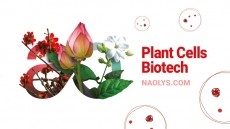Specialty ingredients driven by demand for multifunctional products

The company’s latest title: Personal Care Ingredients: Global Market Analysis, consists of regional reports per ingredient group and a comprehensive database containing information on 130 personal care ingredients in the principle regional markets.
The report estimates that the global market for such specialty ingredients should exceed the US $10bn mark by 2020, driven by a CAGR of 2.8% during the period 2015 – 2020, during which time all ingredient groups should see growth, but led by UV absorbers as the sun care market continues to develop.
A decline for toxicity-linked ingredients
“For example, parabens are expected to decline in the United States, but not in other regions,” said Kunal Mahajan, the report’s project manager.
“Ingredients like BNPD or triclosan are expected to decline, but will show some growth in a few developing countries as the awareness about harmful effects of these ingredients is low there, which explains why the usage of these ingredients continues to grow in countries like India.”
The growth in popularity of multifunctional products is the primary reason why these high performance multifunctional ingredients have become so popular, helping formulators to navigate increasingly complex and demanding requirements arising from this consumer demand.
Preservative boosters and PEG derivatives
The Kline research particularly points to the heightened demand for preservative boosters such as caprylyl glycol, glyceryl caprylate, and ethylhexylglycerin, because they are able to deliver the enhanced emolliency capabilities traditional preservatives can no longer provide.
Likewise, the report also highlights PEG derivatives that act as a rheology modifier, as well as having emulsifying properties, will be in high demand as they serve to keep up with formulation complexities and challenges.
Skin care and hair formulations continue to be the driving force behind formulation demands, with emollients being the leading ingredient for skin care, while conditioning polymers are important in hair care, and surfactants are highly popular for all types of applications.
The industry landscape
While the largest portion of the industry is carved out by big multinationals that include BASF, Dow Corning, Croda and Ashland, Kline’s research points to three principle types of suppliers.
The first are the big multinationals such as BASF, which are involved in almost every ingredients group and cosmetic formulation.
The second is larger multinational suppliers that have key areas of expertise. This group would include Dow Corning, which focuses on areas such as conditioning polymers, while Huber focuses on hydrated silica.
The third group would include regional players, where Kline specifically identifies players in Asia Pacific, including Guangzhou Tinci in China or Selwa Kasie in Japan.









![Latest developments from the South Korean beauty market. [Getty Images]](/var/wrbm_gb_food_pharma/storage/images/_aliases/wrbm_tiny/publications/cosmetics/cosmeticsdesign-asia.com/headlines/brand-innovation/korea-focus-able-c-c-kolmar-and-more-in-this-k-beauty-round-up/17357973-1-eng-GB/Korea-focus-Able-C-C-Kolmar-and-more-in-this-K-beauty-round-up.jpg)

![Able C&C has furthered its partnership with Japanese discount chain Daiso with new makeup launch. [A'pieu]](/var/wrbm_gb_food_pharma/storage/images/_aliases/wrbm_tiny/publications/cosmetics/cosmeticsdesign-asia.com/headlines/brand-innovation/a-pieu-and-daiso-launch-exclusive-2-makeup-line/17339117-1-eng-GB/A-pieu-and-Daiso-launch-exclusive-2-makeup-line.jpg)
![Down Under Enterprises is setting sights on the Asian market as environmental sustainability and traceability become increasingly important. [Getty Images]](/var/wrbm_gb_food_pharma/storage/images/_aliases/wrbm_tiny/publications/cosmetics/cosmeticsdesign-asia.com/headlines/market-trends/down-under-enterprises-shifts-focus-to-china-as-environmental-sustainability-traceability-come-into-the-spotlight/17304932-1-eng-GB/Down-Under-Enterprises-shifts-focus-to-China-as-environmental-sustainability-traceability-come-into-the-spotlight.jpg)
![News updates from Shiseido, Dr.Ci:Labo, Sephora, and more. [Shiseido]](/var/wrbm_gb_food_pharma/storage/images/_aliases/wrbm_tiny/publications/cosmetics/cosmeticsdesign-asia.com/headlines/brand-innovation/updates-from-shiseido-dr.ci-labo-sephora-and-more/17334944-1-eng-GB/Updates-from-Shiseido-Dr.Ci-Labo-Sephora-and-more.jpg)

![Clariant has underscored the importance of localisation strategies and distribution capabilities in China with beauty trends evolving at a rapid pace. [Getty Images]](/var/wrbm_gb_food_pharma/storage/images/_aliases/wrbm_tiny/publications/cosmetics/cosmeticsdesign-asia.com/article/2024/04/16/clariant-emphasises-importance-of-localisation-in-the-era-of-viral-trends/17327969-1-eng-GB/Clariant-emphasises-importance-of-localisation-in-the-era-of-viral-trends.jpg)



